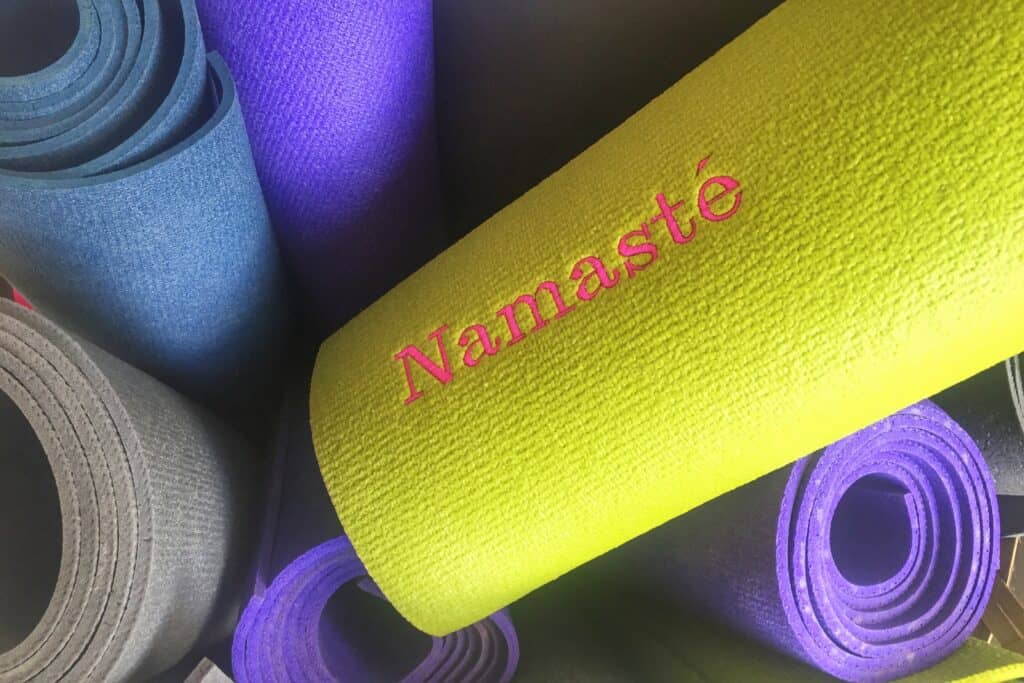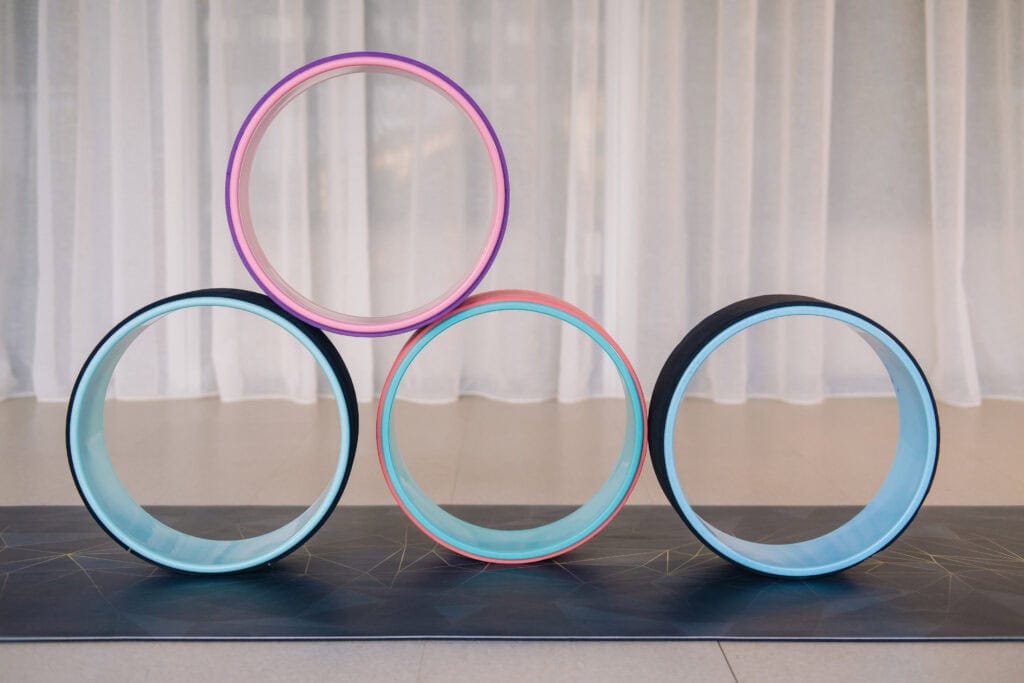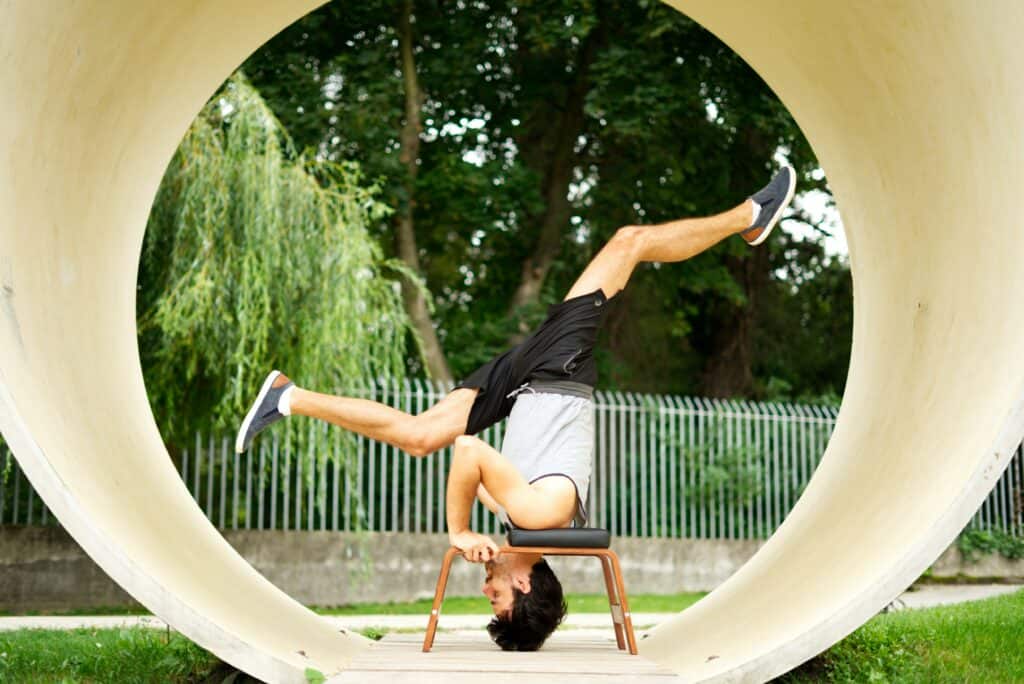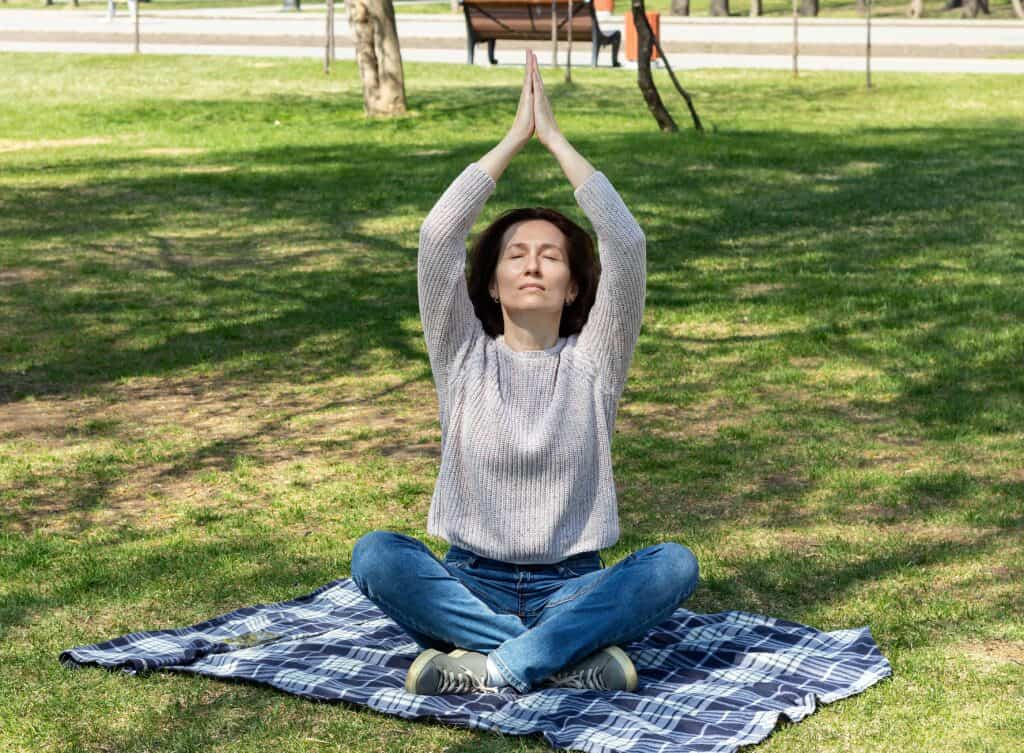Yoga is a powerful complementary therapy that can provide numerous benefits to individuals suffering from this debilitating condition. Studies have indicated that engaging in yoga regularly can lead to decreased discomfort, improved joint performance, and an enhanced sense of overall wellness. In this blog post, we will delve into the various ways in which you can use yoga for arthritis.
We will explore different types of yoga suitable for arthritis sufferers, such as hatha yoga and its gentle approach to movement. Additionally, we’ll discuss modifications that can be made to poses in order to accommodate specific needs and limitations due to joint inflammation or reduced mobility.
Safety is paramount when practicing any form of exercise with a chronic health condition; therefore, we’ll provide essential tips on how to safely engage in a yoga practice tailored for arthritis management. Lastly, finding a qualified instructor who understands the unique challenges faced by individuals with rheumatoid arthritis or knee osteoarthritis is crucial – we’ll guide you through what to look for when seeking expert guidance in your journey toward improved physical and emotional well-being through the ancient art of yoga.
Benefits of Yoga for Arthritis
Yoga, an ancient practice that combines physical postures, breathing exercises, and meditation techniques, has been proven to provide numerous health benefits for people suffering from arthritis. This section will examine the potential of yoga to diminish aches and inflammation linked with arthritis.
Reduced Pain and Improved Mobility
Yoga can help reduce arthritis-related pain and stiffness, as evidenced by the Journal of Rheumatology study, which found that those who regularly practiced yoga experienced significant reductions in their discomfort levels. According to a study published in the Journal of Rheumatology, participants who practiced yoga regularly experienced significant improvements in their pain levels compared to those who did not exercise. Additionally, regular practice can also enhance flexibility and mobility by gently stretching tight muscles around affected joints.
Inflammation Reduction
Besides providing relief from joint discomforts, yoga may also help decrease inflammation caused by arthritis. A research study conducted at Ohio State University found that consistent yoga practice led to lower levels of inflammatory markers in participants’ blood samples over time.
Mental Health Benefits
- Anxiety Relief: Practicing mindfulness through breathwork or meditation during yoga helps calm the mind and reduces anxiety often linked with chronic conditions like arthritis.
- Sleep Improvement: The relaxation aspect involved in many types of yogic practices promotes better sleep quality which is essential for overall well-being as well as managing arthritic symptoms more effectively.
- Emotional Support: Joining a yoga group can provide social support and connection with others who share similar health challenges, thus fostering a sense of community and belonging.
Better Overall Wellbeing
Engaging in yoga can bolster physical fitness, mental acuity, and emotional stability – all of which are essential for managing arthritis symptoms while staying active. These factors are crucial for managing arthritis symptoms effectively while maintaining an active lifestyle. A study published in the International Journal of Yoga Therapy found that regular yoga practice can lead to higher levels of energy, better mood states, and improved quality of life compared to those who did not exercise.
In conclusion, practicing yoga offers numerous benefits for individuals suffering from arthritis. By reducing pain and inflammation while improving mobility, mental health aspects like anxiety relief or sleep improvement contribute to better overall well-being essential for managing this chronic condition effectively.
Outcomes of yoga for arthritis can be observed in enhanced maneuverability, reduced discomfort and inflammation, augmented robustness and pliancy.
Types of Yoga for Arthritis
Several types of yoga can benefit individuals with arthritis, as they focus on gentle movements and stretching to improve flexibility, strength, and balance. Selecting a practice that corresponds with one’s bodily capacities and sense of ease is important.
Iyengar Yoga
Iyengar yoga emphasizes proper alignment in each pose using props such as blocks, straps, bolsters, and blankets. This approach allows those with arthritis to practice poses safely while minimizing the risk of injury or strain on joints. Iyengar instructors undergo rigorous training and certification processes, making them well-equipped to work with students with specific health concerns.
Hatha Yoga
Hatha yoga is a broad term encompassing various styles focusing on physical postures (asanas) combined with breathwork (pranayama). Hatha classes tend to be slower-paced than other forms like Vinyasa or Ashtanga; this makes it an excellent choice for people dealing with joint pain or limited mobility due to arthritis. Look for beginner-friendly Hatha classes where you can learn foundational poses at a comfortable pace.
Viniyoga
In Viniyoga, the practice adapts traditional yogic techniques according to individual needs by taking into account factors such as age, health condition, lifestyle habits, etc., making it suitable for those with arthritis. The focus on breath and movement coordination helps manage pain, improve joint function, and reduce stress.
Chair Yoga
Chair yoga is a modified form of Hatha yoga that utilizes a chair as the primary prop to support the body during poses. This style allows people with limited mobility or balance issues to practice yoga safely while still reaping its benefits. Chair yoga can help improve flexibility, strength, and overall well-being for individuals living with arthritis.
Restorative Yoga
Restorative yoga focuses on relaxation by holding passive poses supported by props such as bolsters, blankets, blocks, etc., allowing muscles to release tension without exertion. This gentle approach can be beneficial for those experiencing chronic pain or inflammation associated with arthritis.
Integrating restorative yoga into your wellness plan can provide relief from arthritis symptoms while also promoting overall health and well-being, though it’s important to consult with a healthcare provider before beginning any new exercise program. It’s essential to consult your healthcare provider before starting any new exercise program; they may have specific recommendations based on your unique needs.
Yoga may be able to help in managing arthritis symptoms, but it is essential to find the appropriate kind for your individual situation. With modifications and a personalized approach, yoga can become even more beneficial in helping you achieve greater relief from pain and stiffness associated with arthritis. Next, let’s explore how customizing the practice of yoga can be beneficial for those living with arthritis.
Modifications for Arthritis
Practicing yoga with arthritis may require some modifications to ensure a safe and comfortable experience. In this section, we will explore various adjustments that can be made to common poses, making them more accessible for those dealing with arthritis.
Using Props
The use of yoga props, such as blocks, straps, bolsters, and blankets, can provide additional support and stability in certain poses. For example:
- A block placed under the hand in Triangle Pose (Trikonasana) can reduce strain on the wrist joint.
- A strap looped around the foot during Seated Forward Bend (Paschimottanasana) allows you to maintain proper alignment without overstretching your hamstrings or lower back.
- Bolsters or folded blankets used under your hips in Pigeon Pose (Eka Pada Rajakapotasana) help alleviate pressure on the knee joint.
Adapting Poses
In addition to using props, adapting traditional yoga poses is another way to make them more accessible for individuals with arthritis. Here are some examples:
- If Downward Facing Dog (Adho Mukha Svanasana) causes discomfort in your wrists or hands, try practicing Dolphin Pose instead by placing your forearms on the ground while maintaining an inverted “V” shape with your body.
- To modify Warrior II (Virabhadrasana II), place a chair behind you so that it supports one thigh when bending into the pose. This reduces stress on both hip joints while still providing a stretch for the inner thighs and groin.
- Instead of practicing Seated Forward Bend (Paschimottanasana) with both legs extended, try bending one knee and placing the sole of your foot against your opposite inner thigh. This reduces strain on the lower back and hamstrings while still providing a gentle stretch.
Focusing on Gentle Movements
Incorporating gentle movements into your yoga practice can help to alleviate stiffness associated with arthritis. Some examples include:
- Practicing slow, controlled joint rotations in areas such as wrists, ankles, hips, shoulders, or neck before moving into more challenging poses.
- Including flowing sequences like Cat-Cow Pose (Marjaryasana-Bitilasana), which involves alternating between arching and rounding the spine while synchronizing breath with movement. This helps to warm up the spine and promote flexibility without causing undue stress on joints.
Yoga Journal offers additional guidance on incorporating gentle movements into your practice.
Mindful Breathing Techniques
Breathwork is essential to any yoga practice but can be particularly beneficial for those dealing with arthritis. Practicing deep diaphragmatic breathing promotes relaxation and helps reduce inflammation by stimulating circulation throughout the body. Try incorporating techniques such as Three-Part Breath (Dirga Pranayama) or Alternate Nostril Breathing (Nadi Shodhana) during your practice or as standalone exercises when experiencing pain or discomfort related to arthritis.
Modifying your yoga practice for arthritis can help reduce pain and improve flexibility, so it is important to make the necessary adjustments. Safety should be a priority when practicing yoga with arthritis, which will be discussed in the next section.
Safety Tips for Practicing Yoga with Arthritis
When practicing yoga with arthritis, it’s essential to prioritize safety and comfort to prevent injury or exacerbation of symptoms. In this part, we’ll explore some important safety steps that can assist you in reaping the advantages of yoga while controlling your arthritis.
Listen to Your Body
The most important rule when practicing any form of exercise is listening to your body. If a pose causes pain or discomfort, stop immediately and try a modification or alternative pose suggested by your instructor. Remember that every individual has different limitations and abilities; therefore, never compare yourself with others in class.
Warm Up Properly
Warming up before starting your practice helps prepare the joints and muscles for movement, reducing the risk of injury. Begin with gentle movements like arm circles, neck rolls, and ankle rotations before moving on to more complex poses.
Use Props Wisely
- Yoga blocks: These can be used under hands or feet during standing poses for added support if reaching the floor is difficult due to joint stiffness.
- Bolsters: A bolster provides extra cushioning in seated positions or as support beneath the knees during supine stretches.
- Straps: Straps allow you to reach limbs without straining joints in flexibility-focused poses such as hamstring stretches.
Maintain Proper Alignment
Maintaining proper alignment during each pose ensures even distribution of weight across joints while minimizing strain on muscles and ligaments. Always follow your instructor’s guidance to ensure you’re performing poses correctly.
Focus on the Breath
Proper breathing techniques are essential for safe yoga practice, as they help relax the body and mind while reducing stress on joints. Source Inhale deeply through the nose, filling your lungs completely before exhaling slowly through either the nose or mouth. You can also learn more about mindful breathing here.
Choose the Appropriate Class Levels
Selecting a class level that matches your abilities is crucial in preventing injury or discomfort during practice. Beginners should start with gentle classes like Hatha or Restorative Yoga before progressing to more advanced styles such as Vinyasa or Ashtanga.
Communicate with Your Instructor
Always inform your instructor about any limitations caused by arthritis so they can provide appropriate modifications and support throughout the class. Source
Incorporating these safety tips into your yoga practice will enhance its benefits and protect you from potential injuries related to arthritis. Remember that consistency is key; regular practice tailored to individual needs can significantly improve the overall wellbeing of those with this condition.
When engaging in yoga with arthritis, it is critical to stay conscious of safety measures in order to minimize potential harm. With that in mind, finding a qualified instructor who understands your condition and limitations is essential for getting the most out of your practice.
Finding a Qualified Instructor
Finding an experienced and knowledgeable yoga instructor is crucial for those with arthritis, as they can guide you through safe practices and modifications tailored to your needs. Here are some tips on how to find the right teacher:
Research their credentials
Ensure that the instructor has completed a reputable yoga teacher training program, preferably one that includes specific training in working with individuals who have arthritis or other chronic conditions. A good starting point is looking for instructors registered with Yoga Alliance, which sets minimum standards for yoga teachers.
Look for experience working with arthritis students
An ideal instructor should have experience teaching people living with arthritis or similar conditions, so don’t hesitate to ask about their background when researching potential teachers. You may also want to seek out testimonials from current or former students who share your condition.
Attend trial classes
If possible, attend trial classes offered by different instructors before committing to a long-term class or membership plan at any studio or wellness center offering yoga for arthritis programs. This will allow you to observe their teaching style and assess whether it suits your needs.
Things to consider during these trials include:
- Their ability to provide clear instructions and demonstrate poses accurately;
- Their willingness and ability to offer pose modifications;
- The overall atmosphere of the class – does it feel welcoming and supportive?
Communication is key
A good yoga instructor should be open to discussing your specific needs, limitations, and goals related to practicing yoga with arthritis. Make sure you feel comfortable communicating any concerns or questions you may have before committing to a class.
Consider online classes or private sessions
If you’re unable to find a local instructor who meets your criteria, consider exploring online yoga classes specifically designed for individuals with arthritis. Many experienced teachers offer virtual courses that can provide the same benefits as in-person instruction while allowing you greater flexibility in scheduling and practice location.
For those with arthritis, obtaining private instruction from an experienced teacher may be a great way to get the individualized attention needed for safe and enjoyable practice.
FAQs
How Does Yoga Help with Arthritis?
Yoga helps with arthritis by increasing flexibility, strengthening muscles around the joints, improving balance, and reducing inflammation. It also promotes relaxation and stress reduction, which can alleviate pain associated with arthritis. Studies have shown that practicing yoga regularly can improve overall joint health.
What Type of Yoga is Best for Arthritis?
Hatha Yoga, Iyengar Yoga, and Chair Yoga are considered beneficial for individuals with arthritis due to their gentle approach and focus on alignment. These styles emphasize slow movements, and deep breathing techniques and use props like blocks or straps to aid in proper positioning while minimizing strain on the joints. The Arthritis Foundation recommends these types of yoga.
What Are Coping Strategies for Arthritis?
Coping strategies for managing arthritis include maintaining a healthy lifestyle through regular exercise (like low-impact activities such as swimming or walking), eating a balanced diet rich in anti-inflammatory foods (Harvard Health), getting adequate sleep, managing stress levels through mindfulness practices (e.g., meditation), using heat/cold therapy to relieve pain, and seeking support from healthcare professionals or support groups.
Conclusion
Yoga can be a beneficial practice for those with arthritis, offering relief from pain and stiffness while also promoting relaxation and overall well-being. Different types of yoga and modifications can be made to accommodate individual needs, making it accessible to everyone.
It’s important to prioritize safety when practicing yoga with arthritis by listening to your body, avoiding certain poses or movements that cause discomfort, and finding a qualified instructor who understands how to work with individuals with arthritis.








